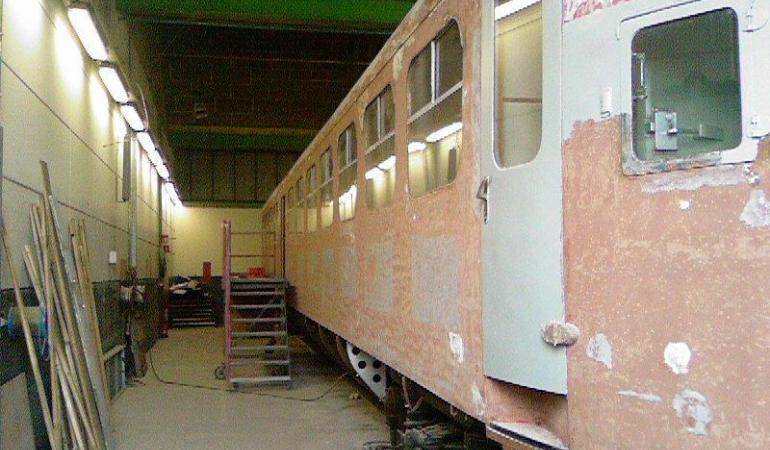
Research by RIVM shows that the participants in the so-called tROM project, their supervisors and other people involved may have been exposed to chromium-6. This may have had adverse effects on their health, also on the long-term.
Between 2004 and 2012, approximately 800 unemployed persons took part in the tROM reintegration project run by the municipality of Tilburg. They were legally obligated to acquire work experience in this way to be eligible for social welfare benefits. The participants in the tROM project helped restore museum trains in a NedTrain workshop in Tilburg. They were engaged in removing old paint layers from the trains. These paint layers contained chromium-6. The control measures in the workplace were not implemented consistently, and personal protective equipment was often of inferior quality or not available in sufficient amounts.
Negative impact on health
The participants and supervisors who have worked on trains or near the trains may have been exposed to chromium-6. The exposure may have caused lung cancer, paranasal sinus and nasal cavity cancer and stomach cancer, or may cause this in the future. In addition, the exposure may have led to chromium-6-related allergic reactions, chronic lung diseases and perforation of the nasal septum. Chronic lung diseases can develop after prolonged exposure.
Inadequate measures
As an employer, the Municipality of Tilburg was primarily responsible for the working conditions of the tROM participants and their supervisors. NS Nederlandse Spoorwegen / NedTrain and the Spoorwegmuseum are, however, partly responsible because they have a cooperation agreement with the municipality in which they agree that "The involved parties will ensure that all their work is carried out within the framework of the Health and Safety legislation." Although NS/NedTrain was aware that paint possibly containing chromium-6 was used on the trains, they did not carry out the appropriate corrective actions to ensure the health and occupational safety of the participants, their supervisors and all parties involved in the project.
At the time of the tROM project, it was known that chromium-6 could be harmful to health. A Risk Inventory and Evaluation at tROM in 2005 led to measures, but chromium-6 did not emerge as a possible component of the sanding dust. Thus, the measures taken were not sufficient to adequately reduce the exposure to the chromium-6-containing abrasive dust.
Inadequate health and occupational safety
There was no systematic health and safety care system within the tROM project. The provision of information and education to tROM participants about hazardous substances was inadequate. There was also no form of any occupational health care support from the participants and no physical medical examination was offered.